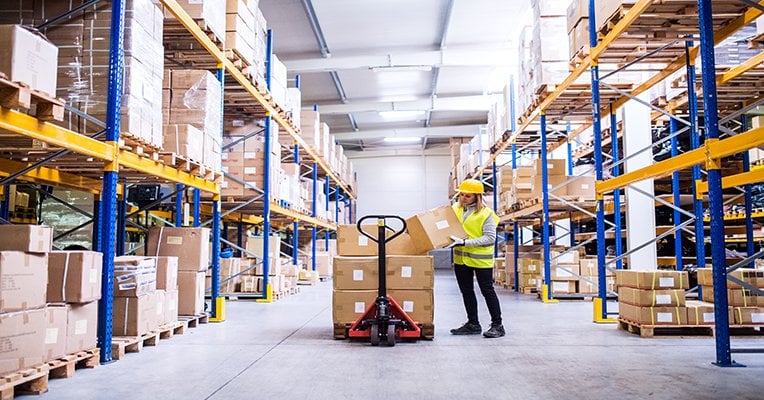
Warehouses play a critical role in ensuring supply chains operate smoothly, efficiently, and cost-effectively. By optimizing inventory management, streamlining distribution, and reducing delays, they help businesses meet customer demands faster. Understanding how warehouses function within the supply chain and what makes them efficient is key to maximizing profitability and operational success.
Optimizing Inventory Management for Faster Order Fulfillment
Well-managed warehouses provide precise inventory tracking, ensuring that stock levels are always accurate. Advanced warehouse management systems (WMS) integrate with supply chain software to track products in real-time, minimizing stockouts and overstocks. Automated inventory control reduces human errors and improves replenishment planning, preventing disruptions that could slow fulfillment times.
Barcode scanning and RFID technology further enhance inventory accuracy, allowing warehouse managers to monitor product movement efficiently. Predictive analytics enable warehouses to forecast demand, reducing excess inventory and preventing costly storage inefficiencies. By aligning inventory with demand trends, businesses can reduce waste and improve cash flow.
Strategic Warehouse Locations Reduce Shipping Times
The placement of warehouses directly impacts delivery speed. Strategically located warehouses near major distribution hubs, urban centers, or transportation networks enable businesses to minimize transit times and shipping costs. By storing goods closer to end customers, businesses can offer faster shipping options, meeting the rising demand for same-day or next-day delivery.
Companies often utilize a multi-warehouse strategy, distributing inventory across multiple locations to reach different markets efficiently. This decentralized model ensures that regional demand is met promptly while reducing dependency on a single warehouse, mitigating risks associated with supply chain disruptions.
Automation and Robotics Enhance Productivity
Modern warehouses leverage automation and robotics to improve efficiency. Automated storage and retrieval systems (AS/RS) optimize space utilization by stacking inventory vertically, reducing the need for excessive floor space. Autonomous mobile robots (AMRs) and conveyor systems streamline order picking, packing, and shipping, cutting down labor costs and processing times.
Robotic picking systems enhance accuracy and speed, reducing errors in order fulfillment. Automated sortation systems classify products by size, weight, and destination, ensuring that shipments are routed correctly without manual intervention. These advancements increase ware house throughput while reducing the risk of delays caused by human errors.

Reducing Supply Chain Bottlenecks Through Efficient Warehousing
Supply chain bottlenecks occur when inefficiencies slow down product movement. Warehouses address these challenges by optimizing inbound and outbound logistics. Cross-docking facilities minimize storage time by transferring goods directly from incoming shipments to outbound trucks, reducing handling and storage costs.
Efficient warehouse slotting techniques improve space utilization by categorizing inventory based on demand frequency. Fast-moving goods are positioned closer to shipping docks, while slower-moving items are stored in less accessible areas. This reduces picking times and accelerates order fulfillment.
Real-time tracking of shipments through warehouse management systems ensures that logistics teams can quickly respond to delays, rerouting shipments when necessary. These proactive strategies prevent supply chain disruptions and maintain consistent delivery schedules.
Energy-Efficient Warehousing Lowers Operational Costs
Sustainability is becoming a priority for warehouses. Implementing energy-efficient lighting, such as LED systems with motion sensors, reduces electricity consumption. Solar panels provide renewable energy solutions, lowering long-term operational costs.
Smart climate control systems regulate temperature and humidity, preserving perishable goods while minimizing energy waste. Green building certifications, such as LEED, recognize warehouses that prioritize sustainability, helping businesses meet environmental compliance standards.
Efficient packaging strategies also contribute to sustainability. Warehouses optimize package sizes to reduce waste and transportation costs, ensuring that shipments occupy less space and use fewer materials.
Technology-Driven Warehouses Improve Decision-Making
Artificial intelligence (AI) and machine learning enhance warehouse operations by analyzing data to improve efficiency. Predictive analytics identify trends in consumer demand, enabling businesses to adjust inventory levels proactively.
Internet of Things (IoT) sensors monitor warehouse conditions, ensuring that temperature-sensitive goods remain in optimal storage environments. Cloud-based warehouse management systems provide real-time insights into stock levels, order processing, and shipment tracking, allowing businesses to make data-driven decisions.
Blockchain technology enhances transparency by recording every transaction in the supply chain, reducing fraud and ensuring that inventory data remains accurate. These digital advancements transform warehouses into highly efficient, technology-driven hubs that support seamless supply chain operations.
Key Considerations for Businesses Utilizing Warehouses
- Scalability: Warehouses should be flexible to accommodate fluctuations in demand. Scalable storage solutions ensure that businesses can expand operations without logistical challenges.
- Security: Advanced security systems, including surveillance cameras, access controls, and cybersecurity measures, protect warehouse inventory from theft and cyber threats.
- Compliance: Warehouses must adhere to industry regulations, including food safety standards, hazardous material handling protocols, and customs requirements for international shipments.
- Workforce Training: Investing in employee training ensures that warehouse staff can efficiently use automation technologies, reducing downtime and improving productivity.
Conclusion
Warehouses serve as the backbone of an efficient supply chain, improving inventory management, reducing lead times, and enhancing order fulfillment. Businesses leveraging advanced warehouse technologies, automation, and strategic distribution networks can streamline logistics while reducing operational costs. By understanding the critical role of warehouses, companies can build a resilient supply chain that adapts to market demands and maintains a competitive edge.




